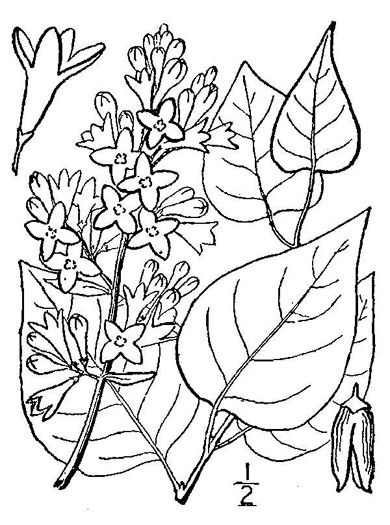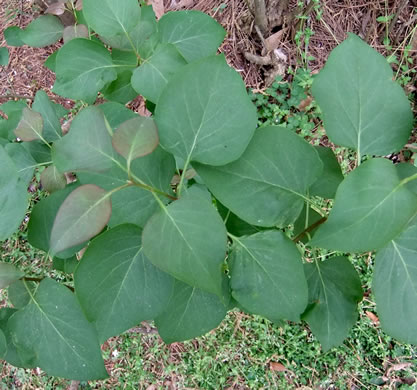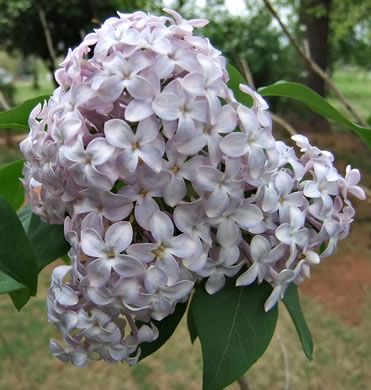Spermatophytes (seed plants): Angiosperms (flowering plants): Eudicots: Core Eudicots: Asterids: Lamiids: Lamiales
WEAKLEY'S FLORA OF THE SOUTHEASTERN US (4/24/22):
Syringa vulgaris
FAMILY
Oleaceae
Go to FSUS key
Dig deeper at SERNEC, a consortium of southeastern herbaria.
Check out EDDMapS.org to see where this has been reported.
SYNONYMOUS WITH
PLANTS NATIONAL DATABASE:
Syringa vulgaris
FAMILY
Oleaceae
SYNONYMOUS WITH Floristic Synthesis of North America. BONAP (Kartesz, 2021)
Syringa vulgaris
COMMON NAME:
Common Lilac, French Lilac
To see larger pictures, click or hover over the thumbnails.
Sam Pratt sbp_20140414_093030
April Spartanburg County SC
In cultivation
Leaves ovate or broad-ovate, entire, dark almost bluish-green, glabrous, per Manual of Woody Landscape Plants (Dirr, 1975+).
Sam Pratt sbp_20140414_093222
April Spartanburg County SC
In cultivation
Flowers extremely fragrant, per Manual of Woody Landscape Plants (Dirr, 1975+).
WEAKLEY'S FLORA OF THE SOUTHEASTERN US (4/24/22):
Syringa vulgaris
FAMILY
Oleaceae
SYNONYMOUS WITH
PLANTS NATIONAL DATABASE:
Syringa vulgaris
FAMILY
Oleaceae
SYNONYMOUS WITH
Floristic Synthesis of North America. BONAP (Kartesz, 2021)
Syringa vulgaris
If a search such as "Carex leptalea var. leptalea" doesn't deliver the results you want, try "Carex leptalea".
Or, to minimize chances of a misspelling, try just "Carex le".
Less is more: If "pencil flower" doesn't deliver the results you want, try "pencil".




